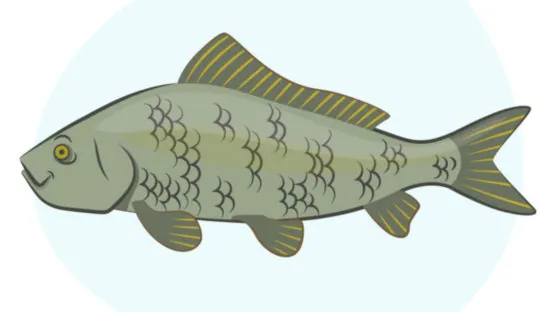Extremely long-lived bigmouth buffalo fish show no signs of a physiological decline with age, according to a new study. This clear example of negligible senescence in aging vertebrates demonstrates the need to better understand the mechanisms underlying senescence and points the way towards research that could clarify them.
Variable senescence
Senescence consists of various changes in physiology, such as altered stress response and decreased immune function. Although there is variation in how quickly senescence occurs, it has been found to increase with age along with other age-related changes such as the shortening of telomeres. However, the existence of variability in senescence rates shows that the mechanisms underlying senescence are at least partially explicable by different life histories.
Differences in the pace of senescence change how age affects an organism. For example, naked mole rats remain fertile even at an advanced age, which is a consequence of the evolutionary dynamics that shaped this species’ life history. Understanding the factors that shape the mechanisms behind senescence is an important step towards learning to modulate them – in other words, learning how to live longer without getting old.
A team of researchers used bigmouth buffalo fish to investigate how aging affects several physiological traits and telomere length. They argue that these fish are excellent organisms for such a study because they are some of the longest-lived vertebrates (bigmouth buffalo fish can live for at least 112 years) and can be accurately aged by counting growth rings in hard internal structures known as otoliths or ‘earstones’.
Old but healthy
In fish ranging from 2 to 99 years old, the researchers measured stress response by checking the ratio of neutrophils to lymphocytes (NLR), which increases with stress. They also evaluated the immune system by measuring how effective extracted plasma was at killing bacteria, and, finally, they checked the length of telomeres. Each assay used samples from 80-100 fish from a variety of sites.
There was some variability between sites, which the researchers report pretty thoroughly in the paper, but the main takeaway is that none of the metrics declined significantly with age. Telomere length was steady, and older fish actually had an improved immune response and a lower NLR, meaning that they were less stressed. In other words, from a physiological perspective, older individuals of this extremely long-lived species are doing at least as well as younger ones and perhaps even better.
The researchers argue that this pattern fits well with the life history of the bigmouth buffalo. According to the ‘disposable soma’ theory, the evolution of aging is a balance in the trade-off between growth, self-maintenance, and reproduction. For many organisms, including humans, the potential benefits of being fertile late in life are offset by the likelihood that an individual will die before getting old and the fact that larger individuals – those who have grown more – aren’t more fecund. Bigmouth buffalo fish have no natural predators and become more fecund as they grown larger, shifting the balance of the equation. These differences in life history probably changed the selective pressures during their evolution, making it worthwhile to invest in self-maintenance even at a great age.
Although the pace of senescence varies considerably, the physiological systems that contribute to different patterns of senescence are not well understood, especially in long-lived vertebrates. Long-lived bony fish (i.e., Class Osteichthyes) are a particularly useful model for studies of senescence because they can readily be aged and exhibit some of the longest lifespans among vertebrates. In this study we examined the potential relationship between age and multiple physiological systems including: stress levels, immune function, and telomere length in individuals ranging in age from 2 to 99 years old in bigmouth buffalo (Ictiobus cyprinellus), the oldest known freshwater teleost fish. Contrary to expectation, we did not find any evidence for age-related declines in these physiological systems. Instead, older fish appeared to be less stressed and had greater immunity than younger fish, suggesting age-related improvements rather than declines in these systems. There was no significant effect of age on telomeres, but individuals that may be more stressed had shorter telomeres. Taken together, these findings suggest that bigmouth buffalo exhibit negligible senescence in multiple physiological systems despite living for nearly a century.
Conclusion
While the continued health of bigmouth buffalo well into old age is astounding, this isn’t a story about a set of biological traits or tricks that we can copy into humans to extend our lifespan. Rather, it’s a demonstration of the extreme variability that exists in senescence and the fact that age and senescence do not have to be linked. There are a handful of other vertebrates that show little senescence with age, but, in this case, there is no senescence and possibly even some improvement. Describing the pattern of senescence in extremely long-lived organisms is the first step towards understanding the mechanisms behind the variability of senescence, and manipulating those is the key to long life without old age, which is the ultimate goal of longevity research.
This is great news if you are a fish of course, but could humans do similar? We take a look at that possibility in our “Some Animals Don’t Age; We May do Likewise” article.
Literature
[1] Sauer, DJ, et al. No evidence of physiological declines with age in an extremely long‐lived fish. Scientific Reports (2021), doi: 10.1038/s41598-021-88626-5




